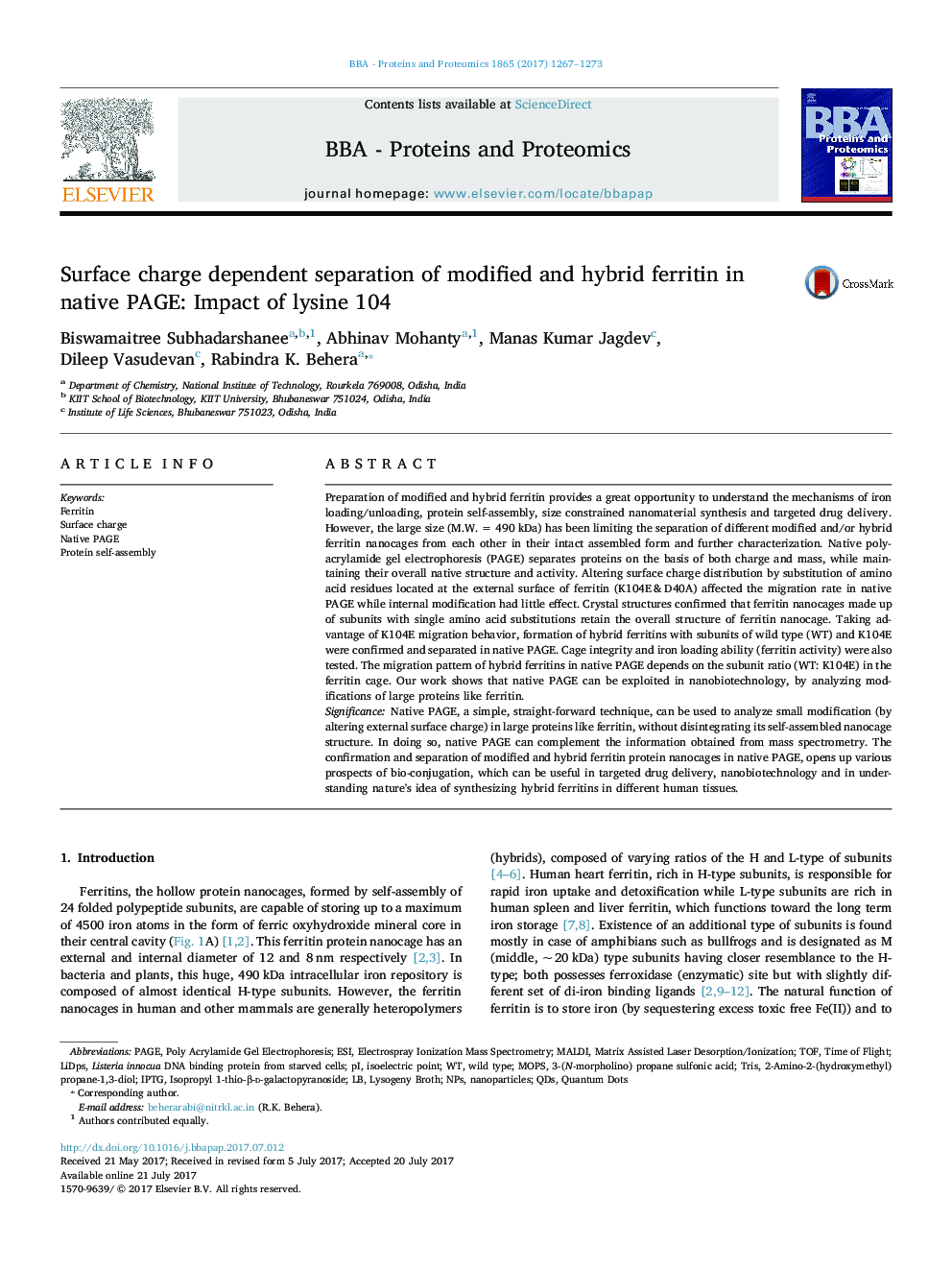| کد مقاله | کد نشریه | سال انتشار | مقاله انگلیسی | نسخه تمام متن |
|---|---|---|---|---|
| 5131886 | 1378780 | 2017 | 7 صفحه PDF | دانلود رایگان |

- External surface modification affects migration rate of ferritin cage in native PAGE.
- Impact of K104E substitution at external surface helps in separating hybrid ferritins.
- Native PAGE separates both modified and hybrid ferritins from its unmodified form.
- Native PAGE analyzes small modification in large, self-assembled proteins.
- Ferritin cage integrity and activity remain intact even upon hybridization.
Preparation of modified and hybrid ferritin provides a great opportunity to understand the mechanisms of iron loading/unloading, protein self-assembly, size constrained nanomaterial synthesis and targeted drug delivery. However, the large size (M.W. = 490 kDa) has been limiting the separation of different modified and/or hybrid ferritin nanocages from each other in their intact assembled form and further characterization. Native polyacrylamide gel electrophoresis (PAGE) separates proteins on the basis of both charge and mass, while maintaining their overall native structure and activity. Altering surface charge distribution by substitution of amino acid residues located at the external surface of ferritin (K104E & D40A) affected the migration rate in native PAGE while internal modification had little effect. Crystal structures confirmed that ferritin nanocages made up of subunits with single amino acid substitutions retain the overall structure of ferritin nanocage. Taking advantage of K104E migration behavior, formation of hybrid ferritins with subunits of wild type (WT) and K104E were confirmed and separated in native PAGE. Cage integrity and iron loading ability (ferritin activity) were also tested. The migration pattern of hybrid ferritins in native PAGE depends on the subunit ratio (WT: K104E) in the ferritin cage. Our work shows that native PAGE can be exploited in nanobiotechnology, by analyzing modifications of large proteins like ferritin.SignificanceNative PAGE, a simple, straight-forward technique, can be used to analyze small modification (by altering external surface charge) in large proteins like ferritin, without disintegrating its self-assembled nanocage structure. In doing so, native PAGE can complement the information obtained from mass spectrometry. The confirmation and separation of modified and hybrid ferritin protein nanocages in native PAGE, opens up various prospects of bio-conjugation, which can be useful in targeted drug delivery, nanobiotechnology and in understanding nature's idea of synthesizing hybrid ferritins in different human tissues.
Separation of modified and hybrid ferritin: WT and K104E ferritin protein cage samples were loaded at the two lanes of the gel, with the hybrid (1:1) ferritin sample loaded in between, in the 6% (w/v) native PAGE gel. Migration rates were directly proportional to the amount of external surface negative charge, with increasing fraction of K104E leading to faster mobility toward the positive electrode, i.e. protein with more negative charge migrated faster. The hybrid ferritin containing equal amounts of WT and K104E migrated at a rate intermediate to both of its constituents. The hybrid ferritin was prepared by dis-assembling the constituent ferritins into their subunits at low pH (<Â 2.0) followed by the mixing and re-assembly of subunits at high pH (~Â 7.0). The substituted external surface amino acid residues are indicated by respective colors.88
Journal: Biochimica et Biophysica Acta (BBA) - Proteins and Proteomics - Volume 1865, Issue 10, October 2017, Pages 1267-1273